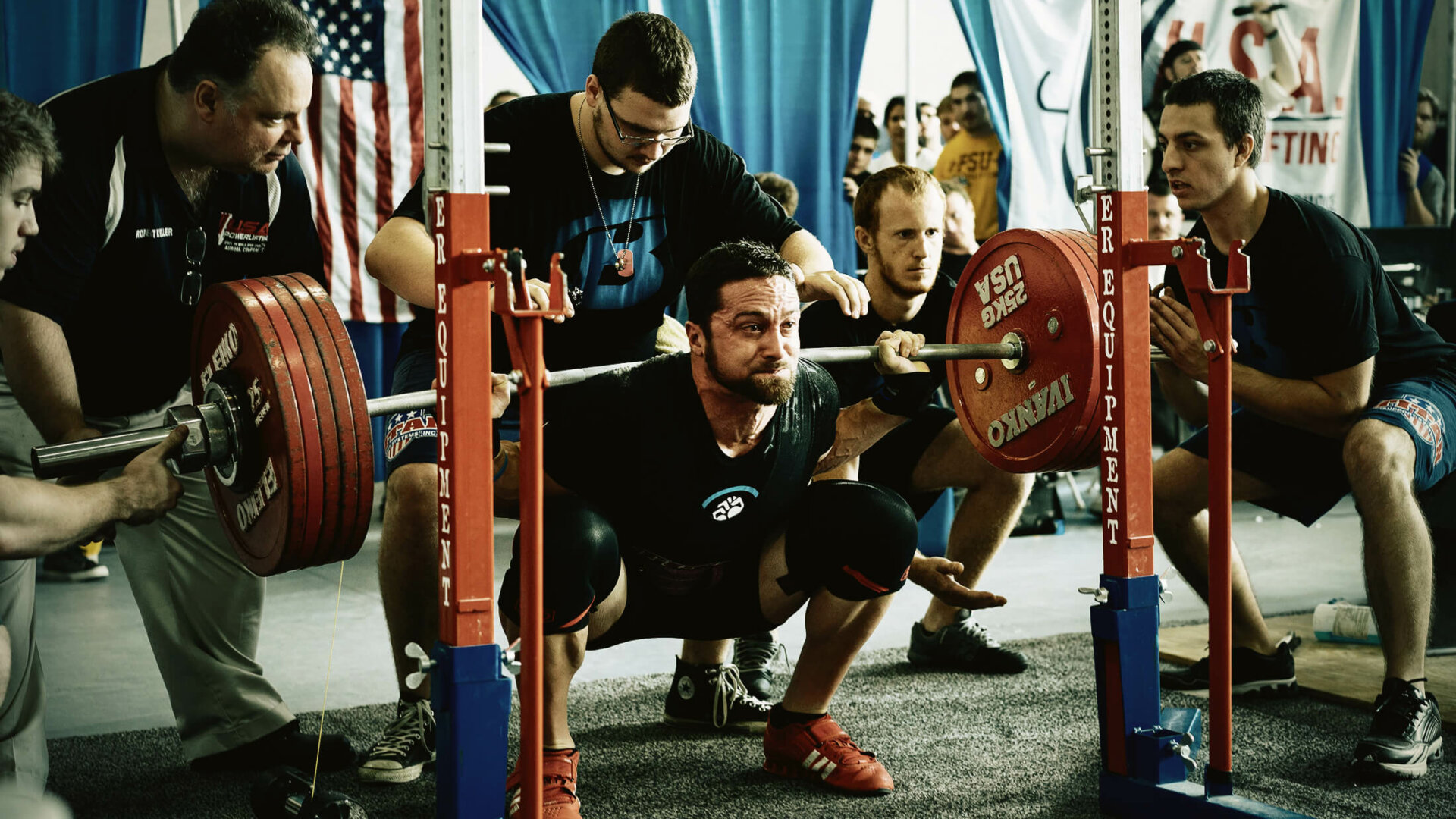It’s an age-old question. What’s better for you, more reps, more weight, or both? Well, it depends on a few factors. They both fall under the banner of progressive overload, provided you are increasing them over time. And both will yield results provided that you increase the overload in a smart fashion. So with that, let’s look at a simple law that we all know when we see it.
Accommodation
On a subtle level, you know what this is. You know that doing the same exact thing over and over again will yield no results and cause you to backslide. It’s called the law of accommodation. Vladimir Zatsiorsky conflated it to exercise stating that
If athletes employ the same training load over a long period of time, performance improvement (gain) decreases. This is a manifestation of accommodation, often considered a general law of biology. According to this law, the response of a biological object to a constant stimulus decreases over time.
So as you accommodate you stop adapting to whatever it is you’re doing. So you have to change a particular stimulus. Two of the biggest training stimuli you have control of are volume and intensity. In addition to that, you can also change the exercises themselves. So what should your focus be? It depends on your specific goals and it depends on your life.
When to Manipulate Volume
Volume refers to the amount of weight you lift. You can figure out your volume by multiplying your sets by your reps and by the weight used. So if you bench 200lbs ten times, that’s 2,000 pounds. If you do four sets of that, your total bench volume is 8,000 pounds. So with that out of the way, what is volume good for? Hypertrophy, for one. And fat loss as well.
That said, let us say that you’re in a caloric deficit and things go well. One day, they stop going well. You can always go to the calories and lower them to lose more fat. But if your metabolism is in a place where eating less than you already are, you could up your training volume as a stimulus to spark further fat loss. You can do this in the form of adding a bit of HIIT to your training. Or, you could tweak your lifting. On the conservative side, you can add an extra set to your compound lifts whenever you do them. After a week or so of that, recheck your progress.
In addition to that, you can add an extra accessory exercise every training day. Last, if you are not training throughout much of the week and you can take the time to do so, you can add another training day to the mix. Depending on your level of creativity, you can mix and match each of the options to increase your training volume.
For hypertrophy, you have a lot of options with this. Calories are in a surplus so energy levels are not suffering. At least, I hope they are not. At any rate, you can take the route of wanting to target a specific muscle and add more volume in the form of isolation movements, as well as using some of the options above. You can even add in more frequency, as well. Not only in terms of days per week that you train, but on a session by session basis.
When to Manipulate Intensity
Intensity, to keep things simple, is the percent of your one rep max. If your max bench is 300lbs and you lift 200lbs on a given day, you are working with about 66.6% intensity. So what is intensity good for? At the high end, it makes you strong. At the lower end, it’s important to have the appropriate intensity coupled with the volume to build muscle.
So when do you up the intensity? If you plan to peak for a meet or a strongman competition, the closer you get to the competition day you want to increase the intensity. Then, to account for accommodation, taper down the week of so that you can exceed your previous intensity threshold. Not only that, but increases in intensity can lead to an increase in your overall volume if you aren’t working near your max too often. With that in mind, the next time you start a training cycle, you can work with higher loads and repeat the process again, without stagnating. The drawback to working with heavy loads for too long will be apparent in how you move. If the little aches start creeping in, or you find that you aren’t able to hit certain numbers like you were weeks prior, you know you have gone too far. In an ideal world, you will want to stop before that before the effects become too deleterious.
Stress
Unless training is your job, your life won’t revolve around training. Work, family, sleep quality, and all sorts of other life events (or catastrophes) will influence the rate at which you can increase any of these particular variables. In some cases, training could make you more stressed than you are. And that’s not a good sign. You have to fit the variables around your life and not the other way around.
So here are some things to consider:
- Training with high intensity is brutal. In the long haul, it’s not sustainable.
- Training with high volume can be taxing, but it’s easier to manipulate.
- The amount of time you can devote to training factors into this.
To put it into perspective, let’s take a look at two different training styles. My favorite example is Dorian Yates. He came from a time where you trained a body part with little frequency and high intensity. The idea here was that you stimulate the muscle group with a lot of stress, recover, and grow. And of course, get stronger. Behind Yates’s method was the idea that you have to tinker with the protocol so that you can figure out how much recovery you needed to keep growing.
Earlier than that, you had Bill Pearl. Pearl hit every muscle group with a high frequency and had the volume to go along with it. In addition to that, he trained out six days a week. So a Pearl-esque split would look something like a three-day plan, repeated twice in a week. If you have ever tried either of their methods, you know how different and taxing they can be.
When choosing what to prioritize you have to ask yourself what type of stress you want to and can recover from. It’s going to be different for everyone based on how your life moves you. Not only that, but how much time do you have to devote to your training in a week? The person who can train for six days a week with no problem will have different needs than the person who trains three days a week. In those instances, the less frequent the training, the higher the intensity, and vice versa.
Applications
Getting stronger aka using higher intensity always has a place for new growth. This is true whether you are a strength athlete or a normal gym goer, or even a bodybuilder. Given how taxing intense training can be if your sleep is on point and your life is going well, that would be a good time to focus on getting stronger. If your life events are suboptimal, then you can dial back the intensity a bit and focus on adding in some volume. Like we said above, you can focus on adding more accessories, more sets and/or reps, or you can even throw in some small variations for each muscle group to get the volume in. For example, adding in reverse curls and hammer curls for a few sets in addition to your regular barbell curls.
Now that we know the mechanics behind Daily Undulating Periodization (DUP), you have an excellent tool at your side. If you aren’t aware, DUP is a form of non-linear periodization that takes your training on a day by day basis. With that in mind, your body’s feedback can be a great indicator on how you should train that particular day.
Harkening back to what I mentioned above, if you’re coming off of a terrible night’s sleep, let’s say, you can use it to guide your training that day. You can focus on your volume that day. When you’re rested, and feeling strong, you can focus on your intensity. As the name implies, it’s a wave pattern—it undulates. The beauty is you aren’t forced into the box of having to perform at certain levels despite your body fighting back against you in protest as could be the case with the older linear periodization models. Furthermore, if you follow something like DUP there will be intersections. Volume and intensity are not enemies to each other, and they can coexist. If you listen to the physiological cues and have a good coach for guidance, you will be able to achieve better and more sustainable results for a long time.
References
- Science and Practice of Strength Training-2nd Edition By Vladimir Zatsiorsky, William Kraemer, 2006
- http://www.musculardevelopment.com/training/2852-principles-of-mass-construction-by-dorian-yates.html#.WJT02_ArJdg
- The Purposeful Primitive By Marty Gallagher, 2008

